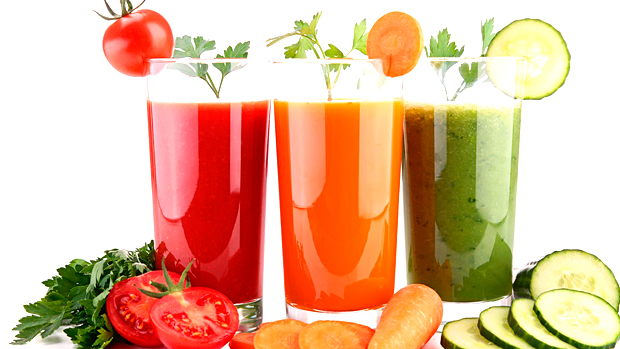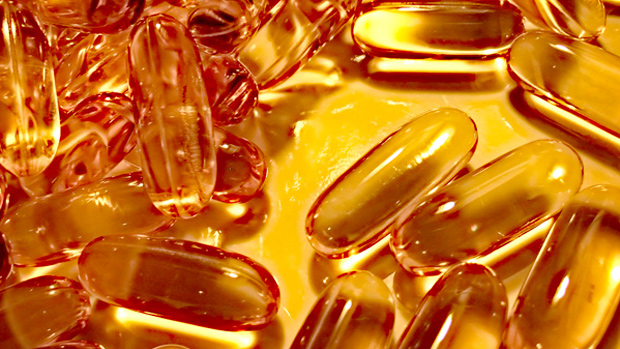In Part 1 we asked the hopeful question: "Is overtraining simply under-eating?"
Unfortunately, those who hope that such things are true need to consider the limited resources of the human body. If you're unfamiliar with my "bricklayer" analogy, Part I is a must-read.
But where were we? Ah yes, I was writing a reality check for those who think they can train intensely six days per week so long as they eat over 5000 kcal per day. Here are some other systemic (whole body) points to consider:
1. Although digestion/ absorption is admittedly usually rapid (within a matter of hours), one must consider whether the neuro-endocrine state is right for storage, growth and repair? Or are you in a "fight or flight" state again because another workout is already upon you the very next day? A premature flood of circulating adrenalin and cortisol doesn't encourage replenishment of your muscles, my friends.
2. Protein synthesis is energy costly, suggesting higher calorie and protein needs, but it peaks by 24 hours post-exercise and is nearly back to baseline by 36 hours.(15) Energy and protein intake outside of this 1 - 1.5 day growth period is less advantageous (i.e. when your "bricklayers" are laid off). Of course, those who exercise 3-5 days per week will be in a fairly constant need of some extra protein and kcal–but generally only for one muscle group at any given time.
3. And regarding point number two above: remember that unused excess kcal just become body fat.
4. Stay cognizant that intense CNS and tissue stimulation must remain within a tolerable frequency or "kcal wasting" will occur due to sympathetic overtraining and restlessness. So does it make sense to force the issue and try to crudely correct it with thousands of extra kcal?
5. Where do you suppose ingested carbs go during the relative glucose intolerance that's induced by doing intense negatives at the gym?(22, 24) Adipose tissue is one possibility, so does it make sense to eat tons of carbs to overcome overtraining? In fact, glucose intolerance after physical stress/ injury is a common problem in clinical settings.(12,16) So much so that it's been partially treated with pre-operation carbohydrates as a preemptive strike or even overcome with the "sledgehammer" approach of additional insulin administration.
6. Many of the points we've made illustrate why androgens work largely as recovery adjuncts (duh). They increase HR and blood flow, increase cell hydration/ volume, clearly raise protein synthetic rates, block the effects of cortisol, enhance psychological well being (reducing emotional stress perhaps), repair soft tissue, and offer several other recovery-associated benefits. This is not to say these things can't be addressed in other patient ways as we'll see.
So what do we do?
Baring obvious things like individual food intolerances and contraindications, here are some general guidelines for eating to increase the quality (not necessarily the speed) of recovery...
– Apply the basics: Consume two protein-plus-carb meals within 2-3 hours post-exercise during the well-established "nutrient window"; also get in approximately 100 g quality fat daily (depending upon body size and kcal needs) to maintain Testosterone and to reduce inflammation. (See Good Fat and Where It's At.)
– Eat your preference of carbs or fat with some protein about 90 minutes prior to lifting as well! (Fasted exercise for fat loss can take place at a separate time or training cycle.)
– Drink at least 500 cc of cool water, or better still, 500 cc of dilute carb and protein beverages while exercising. This is not simply to be a good boy, but to actually support performance and even body composition changes over time!
– Take two separate days completely off per week (e.g. Wednesday, Sunday), do no cardio or stimulants at this time and perturb the beneficial "restive-digestive" state.
– An energy supply 500 kcal in excess of maintenance (typically 3500 kcal/day for recuperating college men) helps growth and compensates for potential training-induced hypermetabolism.(1,3) On a 25/50/25 macronutrient distribution, that's approximately 36 g PRO/ 72 g CHO/ 16 FAT per each of six meals. Of course carbs can be upward-adjusted and fat downward-adjusted during morning hours and vice-versa come evening time.
– A week totally off from intense lifting each 8-12 wk, depending on individual tolerance (as per Hans Selye and his G.A.S.) is more than just acceptable–it's optimal. If you've been eating low-carb, you should even consider doubling (particularly AM) carbohydrate intake during this undamaged / receptive state of mildly active recovery.
– Massage and hot/ cold contrast showers can increase blood flow without CNS-initiated effort; even firm but gentle stretching while sore–and when endocrine/ paracrine / autocrine growth factors are activated–can be helpful. Stretching in itself may not be enough to turn on protein synthesis and make you bigger,(5) but it can elongate muscle structure over time and help keep lymph and venous blood flowing.
– Ginkgo, which is in PowerDrive, increases peripheral circulation (9, 17) in addition to other potential benefits. Again, blood flow is greatly underappreciated.
– Meditation can't be overstated either–with or without "progressive relaxation" and stretching. Psychological stress is a key factor in making one susceptible to training stress that he would otherwise take in stride. (I personally have benefited from Jack Kornfield audio tapes; if that's too geeky or esoteric for you then go ahead and fall apart from overtraining, tough guy!)
In a nutshell, we're attempting to improve the quality–not just the RATE–of recovery. If we eventually realize through careful recording that we can squeeze-in more volume during a meso-cycle, fine, but that's not our purpose.
Remember, since we're growing during the period outside the gym, not inside the gym, we want to avoid any impairment of gains during this recovery period. The worst thing we could do is go tear down a "building" (muscle) that we've just recently gotten under construction! We're in this for SIZE after all, boys and girls. Let the biological bricklayers do their thing. Even if you've "hired" extra bricklayers via androgen use or other supplements, let them work for an extra day rather than one too few; you'll be bigger for your effort. Try not to be daily-training-addicted or fearful of smallness; learn to stay out of the gym every other day if necessary! (I know it's upsetting; here, have a hanky.) And if you dare dismiss that full week "off" after each mesocycle as unmanly or as over-wrought geek-talk, consider this: Even six weeks of detraining doesn't affect 1RM squat, body mass, or percent body fat.(11)
It's my belief that most physique athletes overtrain. Hopefully this article and its promise of added mass will entice you six-day-per-week lifters to back off a bit... if even for a while. I've personally seen skinny overtrainers put on 20 pounds of muscle in a matter of 2-3 months by reducing their out-of-control training load. Although most ectomorphic (thin, angular) trainers could indeed use far more calories than they currently consume, any adjustment toward big eating still doesn't permit an abusive training schedule!
Should these patient approaches create a psychological state of well-rested eagerness, that'd be a great sign that you can get back to business or even up the intensity-volume of your next training cycle.
So here's to new growth through increased patience and thought, as well as increased eating!
References / Additional Reading:
1. Borel, M., et al. Estimation of energy expenditure and maintenance energy requirements of college-age men and women. Am J Clin Nutr 1984; 40(6):1264-72.
2. Coyle, E., and S. J. Montain. Thermal and cardiovascular responses to fluid replacement during exercise. In: Perspectives in Exercise Science and Sports Medicine. Exercise, Heat, and Thermoregulation, edited by C. V. Gisolfi, D. R. Lamb, and E. R. Nadel. Dubuque, IA: Brown, 1993, vol. 6, p. 179-224.
3. Dolezal, B., et al. Muscle damage and resting metabolic rate after acute resistance exercise with an eccentric overload. Med Sci Sports Exerc 32 (7): 1202-1207, 2000.
4. Evans, W. and Cannon, J. The metabolic effects of exercise-induced muscle damage. Exerc Sport Sci Rev. 1991; 19: 99-125.
5. Fowles, J., et al. The effects of acute passive stretch on muscle protein synthesis in humans. Can J Appl Physiol. 2000 Jun; 25(3): 165-80.
6. Frayn K., Regulation of fatty acid delivery in vivo. Adv Exp Med Biol. 1998; 441: 171-9.
7. Fry, A., et al. Catecholamine responses to short-term high-intensity resistance exercise overtraining. J Appl Physiol. 1994 Aug; 77(2): 941-6.
8. Ganong, W. Review of Medical Physiology, 15th Ed. Norwalk, Connecticut; Appleton and Lange: 546.
9. Jung, F., et al. Effect of Ginkgo biloba on fluidity of blood and peripheral microcirculation in volunteers. Arzneimittelforschung 1990 May;40(5):589-93.
10. Kentta, G. and Hassmen, P. Underrecovery and overtraining: A conceptual model. In: M. Kellmann (Ed.) Enhancing Recovery. Champaign, IL: Human Kinetics; 55-79.
11. Kraemer, W., et al. Detraining produces minimal changes in physical performance and hormonal variables in recreationally strength-trained men. J Strength Cond Res. 2002 Aug; 16(3): 373-82.
12. Ljungqvist, O. and Soreide, E. Preoperative fasting. Br J Surg. 2003 Apr; 90(4): 400-6.
13. Lowery, L. Nutritional support of athletic recovery and overtraining. Accepted for presentation. Tutorial to be presented at the annual conference of the American Society of Exercise Physiologists, Indianapolis, Indiana, USA. 2004.
14. Lowery, L. and Mendel, R. Measuring Muscle Recovery. Sports Cardiovascular and Wellness Nutritionists (SCAN) Annual Meeting, Chicago, Illinois, USA. 2003.
15. MacDougall, D., et al. The time course for elevated muscle protein synthesis following heavy resistance exercise. Can J Appl Physiol. 1995 Dec; 20(4): 480-6.
16. Martinez-Riquelme, A. and Allison, S. Insulin revisited. Clin Nutr. 2003 Feb; 22(1): 7-15.
17. McKenna, D., et al. Efficacy, safety, and use of ginkgo biloba in clinical and preclinical applications. Altern Ther Health Med 2001 Sep-Oct;7(5):70-86, 88-90.
18. Moldawer, L. Tutorial presented at the American Dietetic Association annual meeting, 1995.
19. Melin, B., et al. Effects of hydration state on hormonal and renal responses during moderate exercise in the heat. Eur J Appl Physiol Occup Physiol. 1997; 76(4): 320-7.
20. Nieman DC, Influence of mode and carbohydrate on the cytokine response to heavy exertion. Med Sci Sports Exerc May;30(5):671-678, 1998.
21. Priti, R., Miracle, A. and Lowery, L. Immunological responses are related to biochemical stress markers in the acute phase following damaging exercise. Ohio J Sci (Med Biol) 102(1): A7.
22. Sexton, T. and Lowery, L. Effects of eccentric exercise on glucose kinetics and insulin concentrations in resistance-trained athletes. Oh J Sci (Medicine and Biology) 2001; 101(1)(abstr): 13.
23. van der Merwe M., et al. Lactate and glycerol release from subcutaneous adipose tissue in black and white lean men. J Clin Endocrinol Metab. 1999 Aug; 84(8): 2888-95.
24. Widrick, J., et al. Time course of glycogen accumulation after eccentric exercise. J Appl Physiol 1992 May; 72(5):1999-2004.




